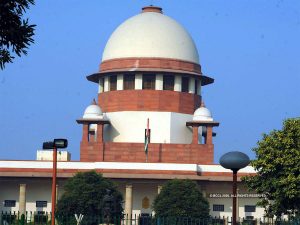Economical Weaker Sections:

A government committee report told the Supreme Court (SC) that “income” is a “feasible criterion” for defining the “Economical Weaker Sections” (EWS).
- In October 2021 NEET aspirants filed a petition asking how ‘Rs 8 lakh’ has been taken as an annual income criterion to identify EWS for grant of 10% reservation in NEET medical admissions under the All India Quota (AIQ) category.
About the Report:
- The committee said the Rs 8 lakh criterion struck a “fine balance” between over-inclusion and inclusion errors and found it a “reasonable” threshold to determine EWS in order to extend reservation in admissions and jobs.
- Considering that the currently effective income tax exemption limit is around Rs 8 lakh for individuals, the committee is of the view that the gross annual income limit of Rs 8 lakh for the entire family would be reasonable for inclusion into EWS.
It rejected the notion that the Centre had “mechanically adopted” Rs 8 lakh as a number because it was also used for the OBC (Other Backward Classes) creamy layer cut-off.
Firstly, EWS’s criteria relates to the financial year prior to the year of application whereas the income criterion for the creamy layer in OBC category is applicable to gross annual income for three consecutive years. - Secondly, in case of OBC creamy layer, income from salaries, agriculture and traditional artisanal professions are excluded from the consideration whereas the Rs 8 lakh criteria for EWS includes all sources, including farming.
- So, despite being the same cut-off number, their composition is different and hence, the two cannot be equated.
- The desirability of a uniform income-based threshold has been upheld by the Supreme Court, and it can be adopted across the country as a matter of economic and social policy.




